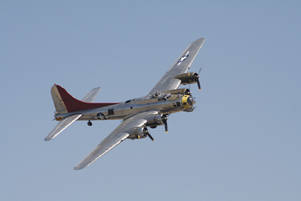Risk Management
By Randy Boss, CRA, CRM, MWCA, SHRM-SCP
THE ULTIMATE RISK MANAGEMENT TOOL
Lives saved, injuries prevented, litigation avoided—reputations retained
The B-17 bomber was a pivotal factor in the Allied victory in World War II. As a result of testing, innovative engineering, and all-aluminum materials, it had a reputation for being indestructible. Affectionately called The Flying Fortress, the B-17 holds a crew of 10: a pilot, co-pilot, bombardier, navigator, five gunners in the rear of the plane, and a ball turret gunner cramped into the rotating globe in the belly of the aircraft.
The B-17 was based on the prototype Boeing model 299, but things didn’t start so smoothly. On October 30, 1935, at a competition among plane manufacturers, Boeing was the favorite because its aircraft could hold more bombs, fly faster, and travel twice as far as other aircraft. It roared down the runway with a seasoned test pilot, Major Ployer P. Hill, at the controls. It rose to 300 feet, stalled, rolled on its side, crashed, and exploded. Investigators found it had crashed because the elevator and rudder controls were locked; these were safety features added to protect the controls from being damaged by high winds while the plane was on the ground.
The checklist is one of the most valuable tools to identify risk. Risk advisors need a checklist to help their clients identify the complex risks in their business and to prevent them.
The locking mechanism was controlled from inside the cockpit, and no one remembered to disengage it before takeoff. As a result, Boeing lost to a plane made by Douglas because the Air Corps general staff believed the Boeing aircraft was too complex to be safe. Boeing was devastated and close to going bankrupt, but fortunately the Air Corps was required by contract to buy 13 planes, enough to equip one squadron.
After this tragic event, the preflight checklist was born; it is a list of tasks that should be performed by pilots before takeoff. The purpose is to improve flight safety by ensuring that no essential tasks are forgotten. It’s used by pilots around the world every day as a critical risk management tool.
The risk management process consists of five steps: identifying, analyzing, controlling, financing, and measuring. It’s like a recipe; if it’s not followed, the result will be a flop. Unfortunately, too many in the insurance industry jump to the fourth step—financing—because that’s what many businesses ask for: a bid or quote. We need to slow down and explain to prospects and clients how they can best protect their businesses. To obtain the lowest cost of risk, we must follow a process that promotes prevention first.
The first step in the risk management process—identify—should be the highest priority because you can’t control or insure what you don’t know. Just ask the owner of the construction crane that collapsed on April 27, 2019, while employees were working on a Google office building in Seattle. A six-month investigation determined that the crane collapse was caused by the contractors not following the manufacturer’s procedures (checklist) to dismantle the structure. After the crews prematurely removed nearly all of the pins and sleeves that helped hold the crane together, the crane collapsed across the busy street, smashing six cars near an intersection. Those killed were two ironworkers working on site, and a college student and a former city administrator, both whom were crushed inside their vehicles. Four others were injured.
Following a checklist would have avoided four deaths, four injuries, years of litigation, and incalculable damage to this respected construction contractor’s reputation. No amount of insurance can replace the lives lost, life-changing injuries, and the pain and suffering of the victims and their families.
The checklist is one of the most valuable tools to identify risk. Risk advisors need one to help their clients identify the complex risks in their business and to prevent them. Your employer clients need to be in a stronger position to control risk and also have the right insurance protection in place if an unfortunate incident occurs.
The author
Randy Boss is a Certified Risk Architect at Ottawa Kent in Jenison, Michigan. As a Risk Architect, he designs, builds and implements risk management and insurance plans for middle market companies in the areas of safety, work comp, human resources, property/casualty and benefits. He has over 40 years of experience and has been at Ottawa Kent for 38 years. He is the co-founder of emergeapps.com, web apps for insurance agents to share with employers. Randy can be reached at rboss@ottawakent.com.






